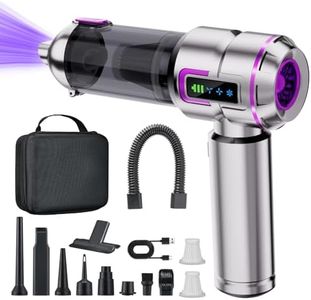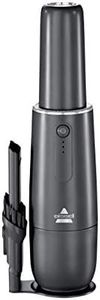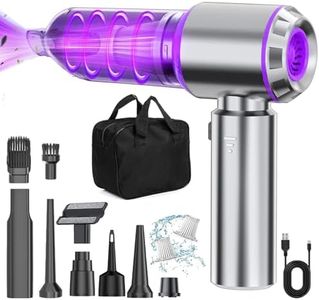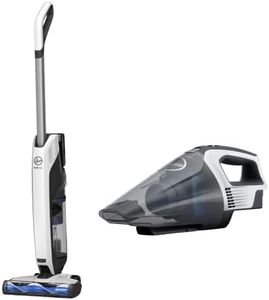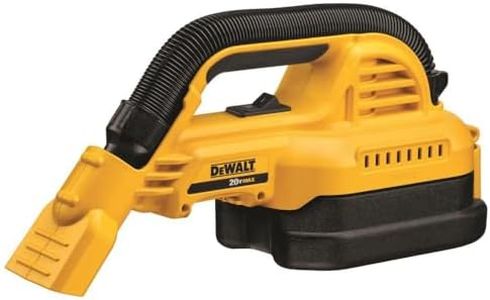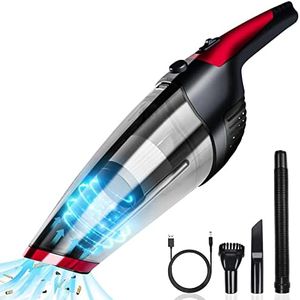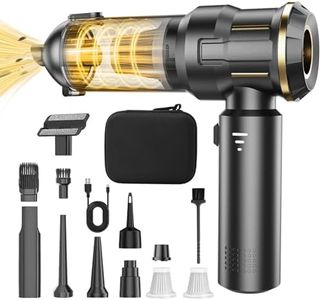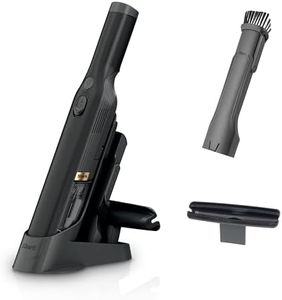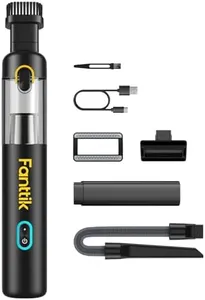We Use CookiesWe use cookies to enhance the security, performance,
functionality and for analytical and promotional activities. By continuing to browse this site you
are agreeing to our privacy policy
10 Best Cordless Hand Vacuums
From leading brands and best sellers available on the web.Buying Guide for the Best Cordless Hand Vacuums
When shopping for a cordless hand vacuum, it's important to think about how you'll use it. Are you cleaning up small messes, pet hair, cars, upholstery, or hard-to-reach corners? Choose based on your specific needs, the surfaces you want to clean, and how convenient and easy you want the vacuum to be. Understanding the key specifications will help you pick the best match for your lifestyle and cleaning habits.Battery LifeBattery life tells you how long the vacuum can run on a single charge. This is important because cordless vacuums rely on batteries and you don’t want it to run out before you finish cleaning. Battery life is typically measured in minutes and can range from under 10 minutes to over 30 minutes. For quick pickups or occasional use, less battery life may be okay, but if you plan to clean larger areas or your car, longer battery life is helpful. Choose a model with enough battery life to finish your usual cleaning in one go.
Suction PowerSuction power refers to how strongly the vacuum can pick up dirt, dust, and debris. This is usually measured in air watts or simply described by the manufacturer as strong, medium, or light. Higher suction power is useful for picking up larger debris or cleaning deep into carpets, while lower suction power may be acceptable for quick touch-ups or hard surfaces. Pick the suction level based on what types of messes and surfaces you’ll encounter most.
Weight and ErgonomicsThe weight and ergonomic design of a hand vacuum affects how comfortable it is to hold and use, especially for longer periods or for people with limited strength or mobility. Light vacuums (usually under 3 pounds) are easiest to handle and best if you plan to use them frequently or need to reach high or tight spaces. Heavier models may have larger dustbins or batteries, but can get tiring to use. Select a vacuum that feels comfortable for you to hold and maneuver during your typical cleaning tasks.
Dustbin CapacityDustbin capacity indicates how much dirt and debris the vacuum can hold before it needs to be emptied. Smaller capacities require more frequent emptying, which can be bothersome if you clean up bigger messes. Larger capacities let you vacuum more without stopping, but may make the unit bulkier. Think about how much you typically need to pick up in one session and choose a capacity that matches your routine.
Filter TypeThe type of filter in the vacuum affects how well it traps dust and allergens. Basic vacuums may have standard filters, but some offer HEPA or washable filters. HEPA filters are best if you have allergies, as they trap tiny particles. Washable filters are convenient because you can reuse them instead of buying new ones. Pick a filter type that matches any sensitivities in your household and your willingness to clean or replace filters.
Attachments and AccessoriesAttachments like crevice tools, brush heads, and pet hair tools increase the vacuum’s versatility, letting you clean in tight corners, on upholstery, or tackle pet fur. If you have pets, look for a model with a motorized brush; for cars or corners, a crevice tool is valuable. Choose a vacuum that comes with the attachments best suited to your specific cleaning challenges.
Charging and Storage OptionsCharging and storage solutions affect how easily you can keep the vacuum charged and out of the way. Some models come with wall mounts or charging stands, making storage simple and keeping the vacuum ready to use. If space is tight or you want easy access, these features are helpful. Consider how much room you have and whether you want a dedicated place to store and charge your vacuum.


